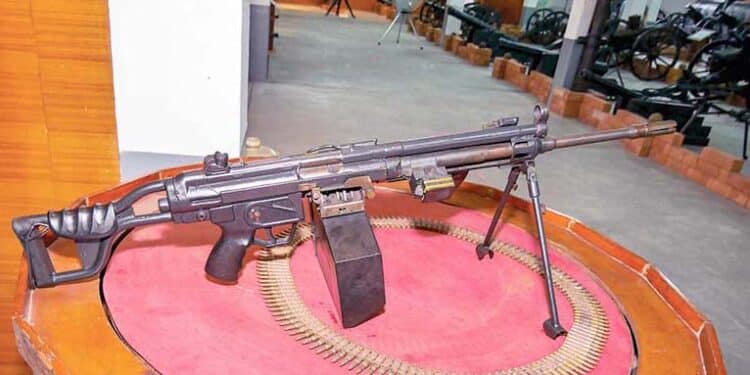Story & Photography by Miles Vining
Nestled between military barracks, headquarters buildings, officers’ clubs and canal systems in the Dusit District of Bangkok is the home of the Royal Thai Army Ordnance Corps compound. Unlike some of the more congested, loud and smelly parts of city, the area between the Bang Sue MRT station on the Blue Line and Victory Monument is a much more relaxed scene, allowing a visitor to take a calming stroll to the Royal Thai Army Ordnance Department. Finding the museum is as simple as looking it up on Google Maps; however, gaining entry to the museum is another quest entirely. Small Arms Review was graciously offered the opportunity to tour the museum by a long-time friend of the magazine. The museum is in an old building that overlooks Thahan Road on which the entry to the Army Ordnance Department is situated. For a visitor out of the blue, the ability to enter the museum or not is more contingent on the guards and officers on duty at the main gate to the Army Ordnance Corps compound. Some visitors have found access this way; others have not. Currently, the senior officers within the Army Ordnance Corps want to permanently offer the museum to the public on a visitor basis, but this will most likely be a year in the making. We would recommend partnering with a Thai friend, calling beforehand and walking in with him or her in order to translate.
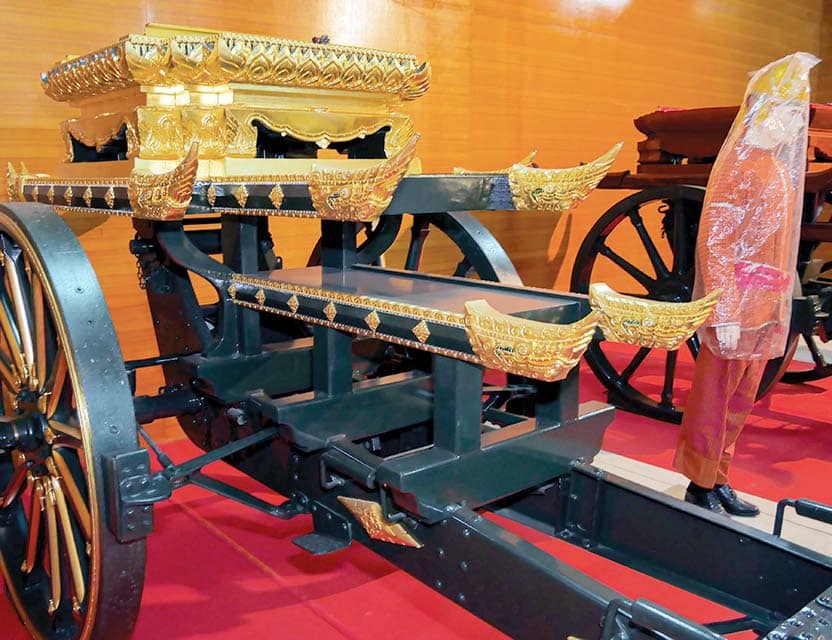

The Royal Thai Army Ordnance Corps is the primary branch of the Royal Thai Army (RTA) that is responsible for manufacturing, issuing and servicing the ordnance needs of the RTA and has been active for many years in this capacity. Thailand receives the lion’s share of its equipment from overseas purchases and especially from U.S. military aid programs since the Vietnam War. But there are a number of indigenous manufacturing programs that the Ordnance Corps takes part in. One of the biggest is the 5.56x45mm NATO HK33 rifle that was produced at the same Bangkok com-pound. In Thai military and law enforcement service, the HK33 was adopted as the Type 11 in the 1990s, differing for both branches in terms of engravings and markings. Currently, the Ordnance Corps only services and refurbishes active-service Type 11s while the Corps ramps up for the licensed manufacture of TAVOR TAR-21 rifles at the facility. The TAR-21 is already used by the RTA as purchased from IWI in Israel, but this will allow the Ordnance Corps to continue manufacturing the majority of their own service rifles.

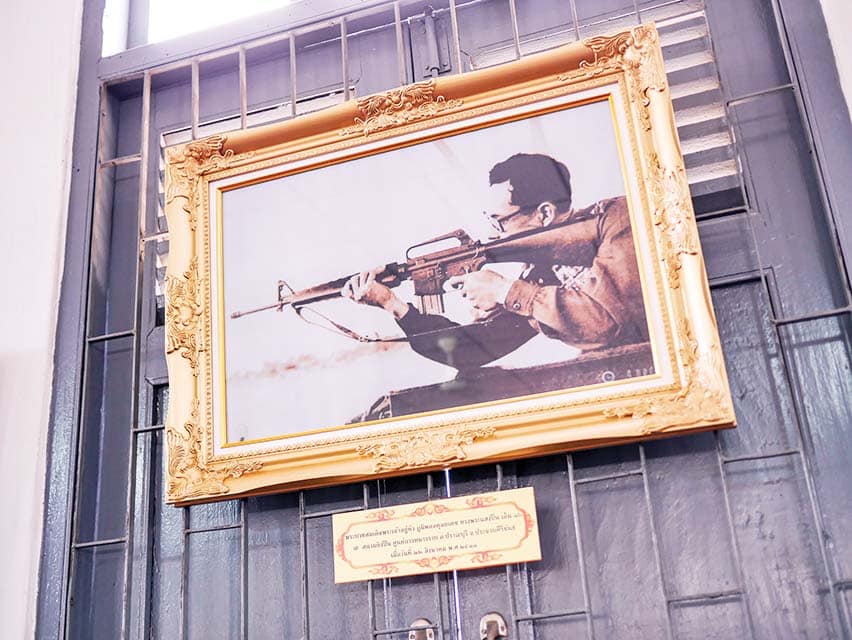
Although the RTA traces its origin to its founding in 1874, the museum collection spans well beyond that year, reaching into periods where Thai soldiers fought without firearms or cannons. This includes various swords, spears and shields that were used in historic battles. Where the museum is strongest is in its early to mid-20th century collection. Here we saw a wide variety of contract small arms and prototypes that came into Thailand from all over Europe and the United States. Many of these were sent to Thailand for trial and were thereafter retained by the Ordnance Corps in the reference collection where they lie today. With the outbreak of hostilities that would engulf Southeast Asia during the Vietnam War, Pol Pot’s era in Cambodia and especially the Communist insurgency in northern Thailand, the collection moved toward the captured mate-riel that came with fighting Communists in the north and the resulting U.S. aid that flowed in at the same time. Items such as early Armalite AR-15s with green furniture, XM177 carbines and covertly produced Chinese AK-47s marked as “M22” are very representative for this period. After the end of large combat operations, we noticed a marked decline of small arms in the collection with the exception of indigenously produced Thai Ordnance Corps materiel which includes some very niche designs and prototypes for the military.
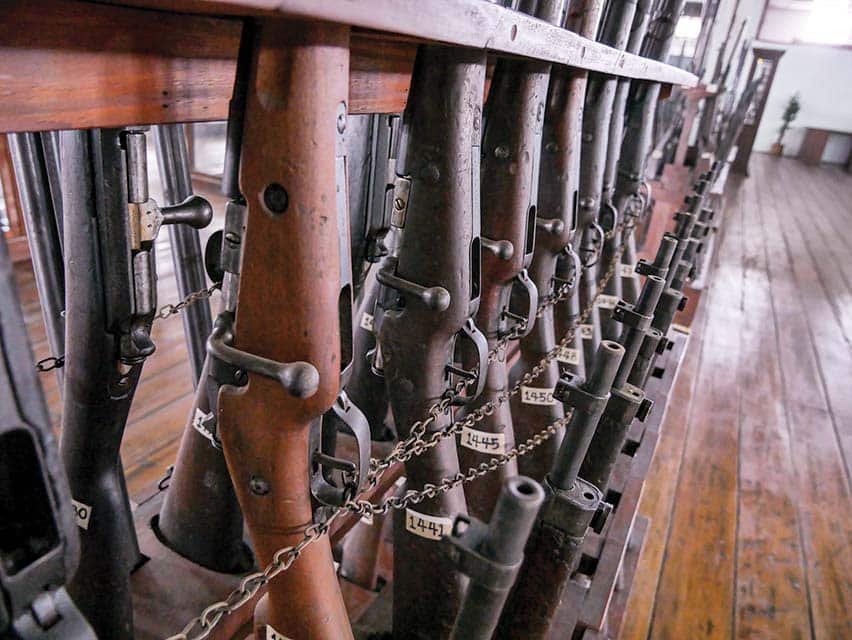
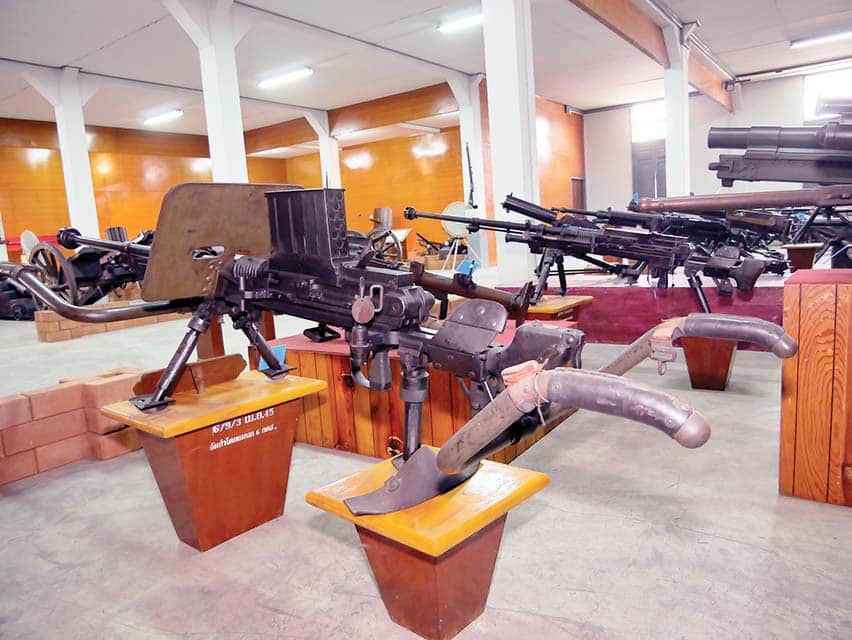
The museum’s first floor is the presentation hall where visitors are greeted by a sign in Thai over the entry door. Luckily for photographers, barely any of the small arms in the hall are encased in glass, so good photographs of minute details and markings are relatively easy to achieve. If the Ordnance officers present that day are especially kind, one will be able to get behind the stands and take in-depth photo graphs up close.
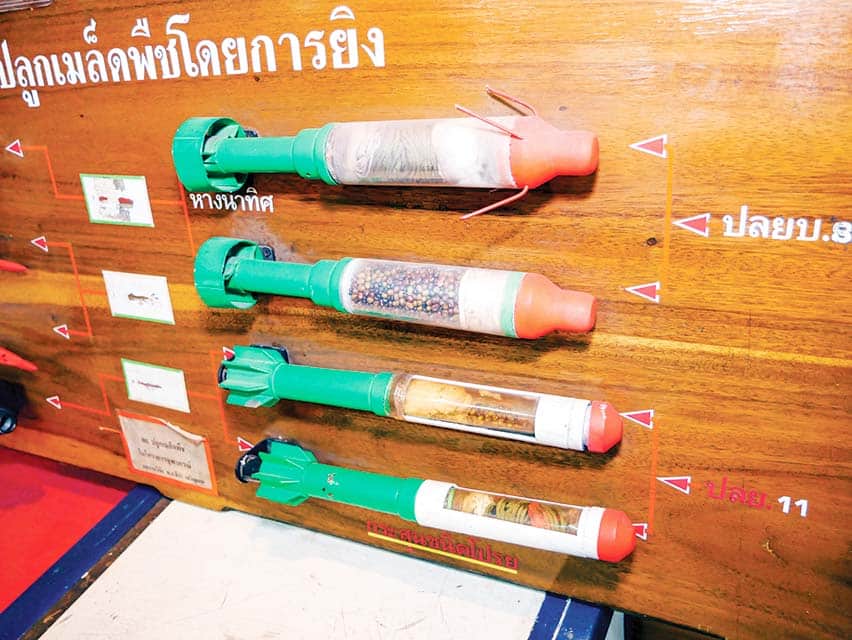
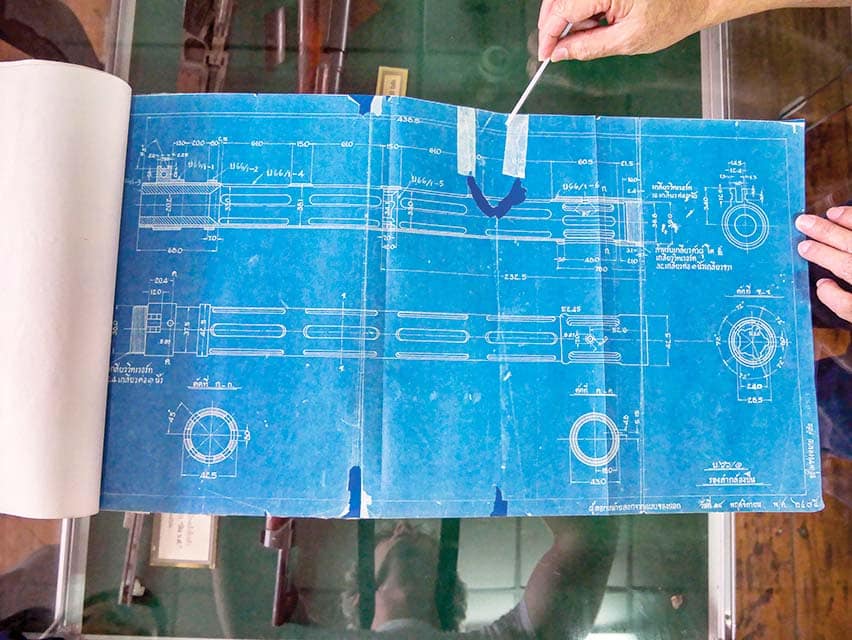
This hall is organized in a wraparound fashion where visitors snake through the displays that are organized chronologically. The first displays presented to the visitors as they enter are to the left and are early cannons used by previous Thai dynasties, especially during the reign in the ancient city of Ayutthaya when it was the seat of the kingdom before being destroyed by the Burmese in 1767. Rounding the corner is a wooden royal chariot built by the Ordnance Corps that was used in the king’s coronation ceremony. After the chariot, is a long row of First and Second World War heavy machine guns and cannons. The heavy machine guns range from Thai contracted Vickers, Maxims, Japanese variants and even some French examples, among others. This section concludes with a wall marking where the Communist insurgency begins, featuring small arms captured by the Communists and those used against them. Rounding up from this exhibit is an entire wall dedicated to Thai prototypes of the Type 11, various examples of working with the M1 Garand rifle to create better stocks and, most fascinating, a display of Thailand’s experimentation with using Type 11 rifle grenades to shoot planting seed canisters from helicopters over rural areas in order to stimulate agricultural programs in the kingdom. The Thai government has always taken a very serious interest in the country’s agricultural programs, so developing something like this isn’t entirely surprising in the Thai context. Outside of it, however, the canisters are quite the unique invention. It is not known how effective the program was as it is not in use today by any Thai government agency.
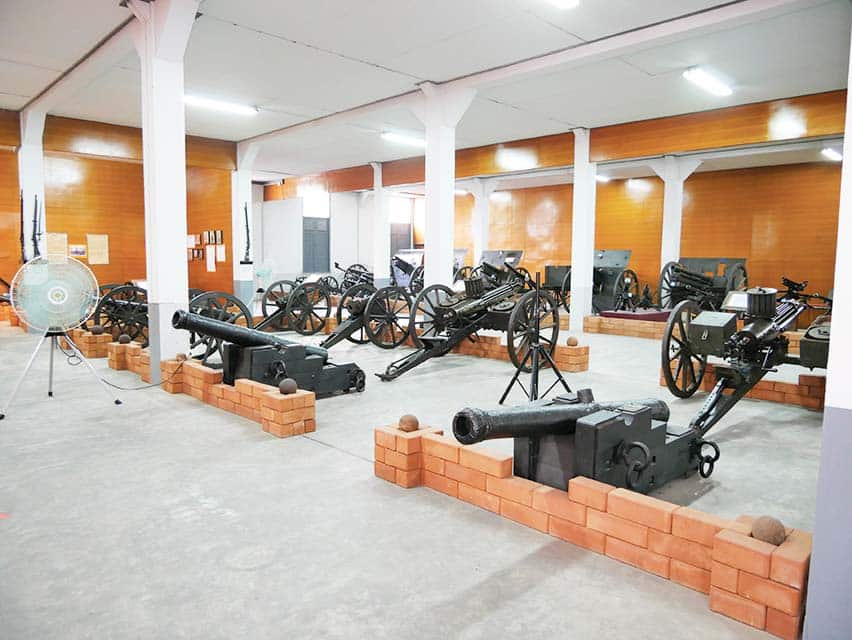
Above the presentation hall on the second floor is the reserve collection of the museum. This is where all the small arms that are not on display are kept. They are secured by chains to rifle racks or kept in glass cases, with a separate section for handguns. Entering the hall, it is customary for Thai people to pay their respects to an altar that is situated in one of the corners of the room. This is where most of the prototype and trials rifles from the 19th and 20th centuries are kept, as opposed to mostly machine guns and cannons downstairs. Possibly one of the more interesting artifacts in this room is a set of complete machine shop drawings for Danish Madsens, all written in Thai. A number of Madsens exist in Thailand with extensive Thai markings on them, begging the research question: to what extent did the Thais engage in Madsen production in the interwar years?
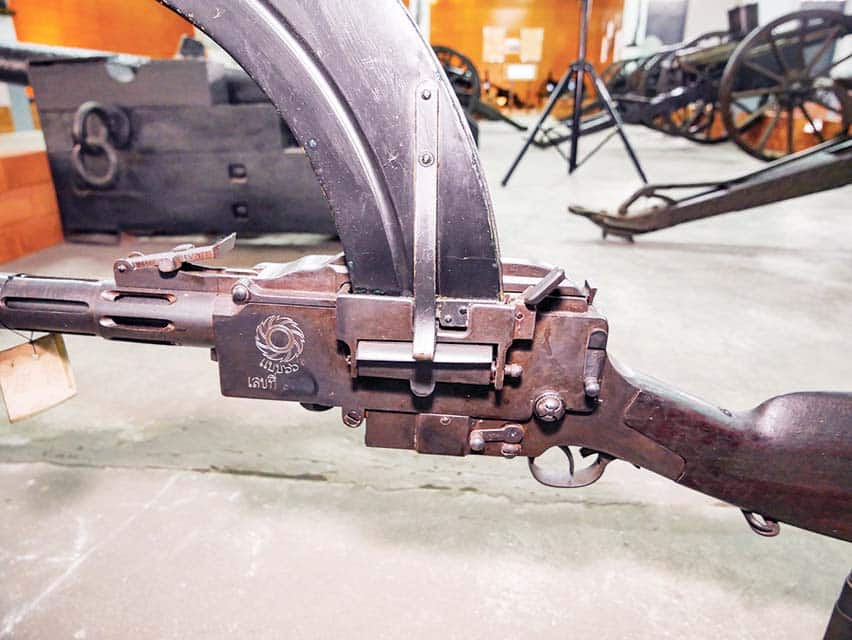
Visiting
The Royal Thai Army Ordnance Corps Museum is a tough one to get into for the casual visitor, so putting it on a checklist for Bangkok will take more than jotting it down as a line item. But for the serious small arms researcher and especially for anyone doing historic small arms research in Southeast Asia, the collection is an absolute requirement.
The museum is open on a case-by-case basis. Our best recommendation would be to call ahead and work with a Thai partner to help a visitor through the process, especially with translation.
| This article first appeared in Small Arms Review V24N1 (Jan 2020) |



